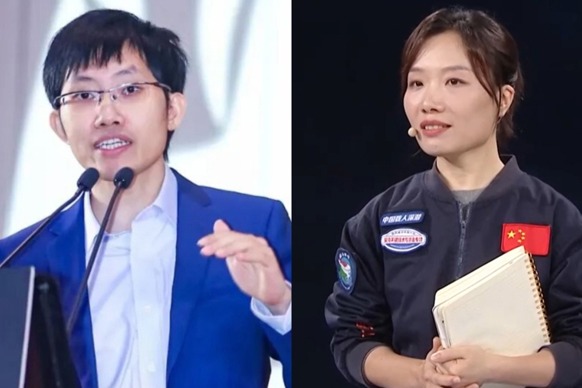Showcasing a dynamic era
By Deng Zhangyu | China Daily | Updated: 2024-12-19 06:22

A silver box from the Dingmaoqiao Hoard in Zhenjiang is engraved with eight pairs of flying geese, interspersed with entwined lotus patterns and fish roe designs, creating an exquisite masterpiece. The box is a must-see piece from the Zhenjiang Museum in Jiangsu province.
According to the museum's director Zhang Xiaojun, a total of 956 gold and silver artifacts were unearthed from the Dingmaoqiao Hoard, including wine vases, food containers, storage vessels, and tea sets, dating back to the latter half of the 9th century.
These artifacts demonstrate the open and inclusive tea and wine culture of the Tang Dynasty.
China has a long history of tea culture. Another highlight of the show is a set of Tang Dynasty three-color glazed tea wares from Henan province. It includes various tea utensils and a figurine of a seated tea brewer, representing the earliest known complete set used for grinding, boiling, serving, and drinking tea. Notably, the seated tea brewer figurine is a depiction of Lu Yu, the revered "Sage of Tea".
These tea wares were excavated from a tomb chamber measuring only 4 square meters, indicating that the tomb occupant, despite their modest social status, possessed such a comprehensive tea set. This suggests that by the Tang Dynasty, tea culture had spread from the imperial court to ordinary people.
Another star exhibit is a thumb-sized golden dragon discovered from the Hejia Village Hoard in Xi'an, what was Chang'an. With its dragon head held high and limbs outstretched, this ritual instrument used in Taoist ceremonies serves to connect heaven and earth, praying for peace and prosperity for the nation and its people.
























